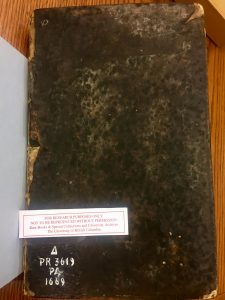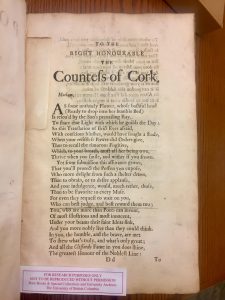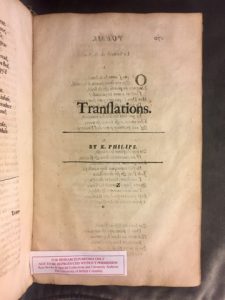This copy of the book is in surprisingly good condition. Everything in the book is very legible. There is no marginalia apart from the inscription in the front of the book which outlines who it belonged to, which I have detailed in the post about previous owners. The most considerable damage to the book is to the spine. The outside of the spine is entirely missing, however, the book binding remains intact and there are no loose pages. The front and back covers of the book are intact as well. They are dark brown and look very old, with some tearing and discolouration. There is at least one page of the book that is patched with another piece of paper. This could have been to cover something up, but it is not clear. The pages are very yellowed, with some stains. I didn’t notice any tears or holes or significant damage to the pages.

Front cover of the book.
In one page, I noticed a rectangular piece of parchment that was about the same colour as the pages of the book. I am not sure how long it had been in the book, but it might have used as a bookmark. It looked quite old as well.

Loose piece of parchment in one of the pages.
Another point of interest I noticed was that the letter “f” is at times used in place of the letter “s”. It seemed its use was random, because the letter “s” was used at times and at other times not. However, with further research, I discovered that the tall “s”, or “f” is used at the start or middle of a word, while “s” is used at the end of a word or after a tall “s”. This was common in Old English.

Example of “f” used in place of “s”. Here, the “f” is used in the middle of the word, and the “s” is used at the end of the word.
